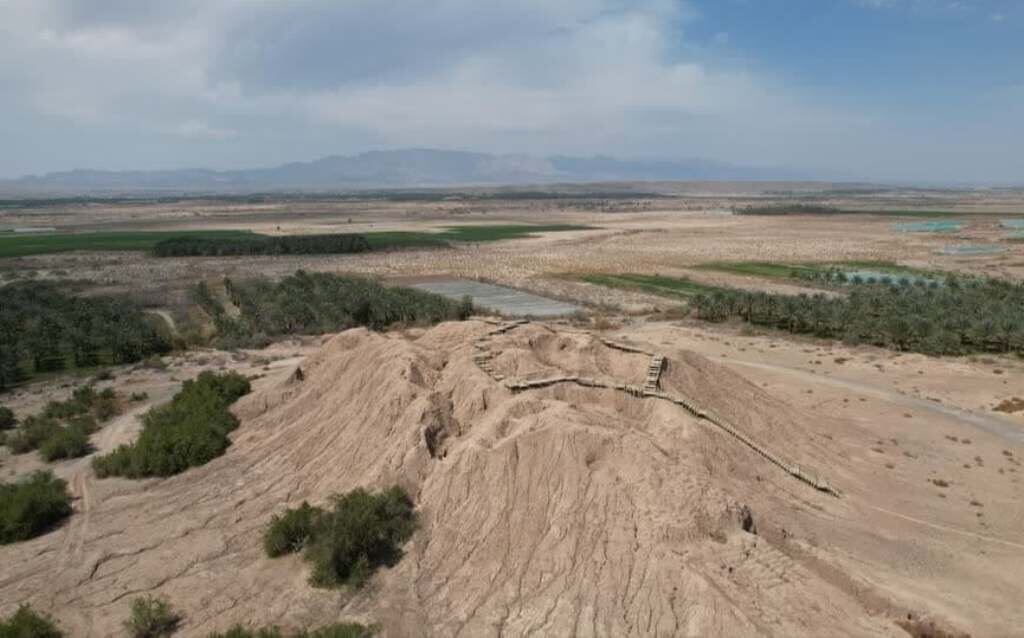Tourism infrastructure development begins at Konar Sandal, a Bronze Age site in southern Iran

TEHRAN – Work to construct basic tourism infrastructure has begun at Konar Sandal, a Bronze-Age archaeological site located in the Jiroft region of Kerman province, southern Iran.
According to Nader Alidadi Soleimani, the provincial tourism chief, the project which entails some restoration work has been made possible through national funding.
“The plan includes both restoration efforts and the enhancement of visitor amenities to promote tourism at this historic site,” IRNA quoted Alidadi Soleimani as saying on Tuesday.
“Emergency preservation measures are underway, along with traditional restoration techniques such as brickwork, waterproofing, plastering, and joint filling,” the official explained.
“On the tourism side, our goal is to create better conditions for travelers and improve access to the site to attract more visitors.”

Situated in the Jiroft plain of Kerman province, the site consists of two mounds a few kilometers apart, called Konar Sandal A and B with a height of 13 and 21 meters, respectively. At Konar Sandal B, a two-story, windowed citadel with a base of close to 13.5 hectares was found. Tablets with scripts of unknown nature were reportedly discovered at the site.
An initial archaeological dig at the site occurred about twenty years ago, led by Iranian archaeologist Yousef Majidzadeh and a team of international experts. This survey uncovered a Bronze Age settlement nestled in the Halil-Rud Valley.
Jiroft’s discoveries are viewed by many Iranian and international experts as evidence of a civilization as significant as Sumer and ancient Mesopotamia. The remarkable Jiroft site’s discovery was accidental in the early 21st century when severe floods along the Halil River unearthed numerous previously unknown tombs, revealing artifacts believed to date back to the Early Bronze Age (late 3rd millennium BC).
Reports initially described the sight of “an ancient object floating on the water’s surface.” Recognizing its value, villagers, impacted by two years of drought, swarmed the riverbanks the following day, searching for 5,000-year-old relics.
Despite its historical significance, geological factors led to the site’s oversight by tourists and archaeologists, who were typically more focused on locations like Mesopotamia, situated roughly 1,000 km away.
In 2003, Iran invited Jean Perrot, the renowned French archaeologist who directed excavations in the Shush (or Susa) area from 1969 to 1978 as head of the French National Centre for Scientific Research (CNRS).
Referring to the discovery of Jiroft’s artifacts as an archaeological revolution, Perrot remarked: “An area once thought inhabited solely by nomads and their livestock was the center of an incredibly advanced civilization. Here, a structured society thrived, distinct from the Sumerians. We must now consider Jiroft as the birthplace of civilizations, shaping our view of those that came before and after.”
AM
